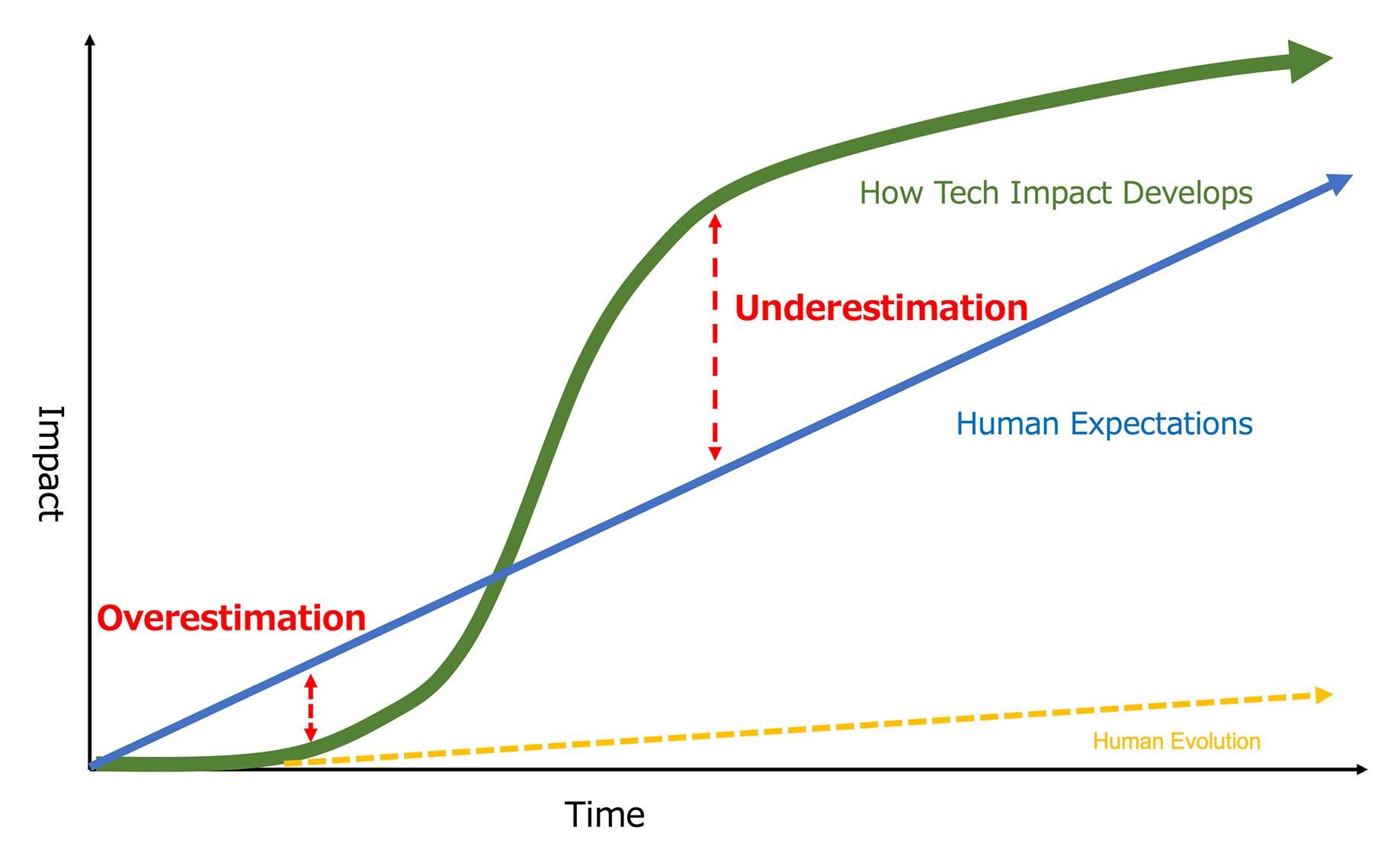Mark A. Milley, former Chairman of the Joint Chiefs of Staff of the United States, along with Eric Schmidt, former CEO and Chairman of Google, published an article in the November issue of Foreign Affairs magazine titled "America Isn't Ready for the Wars of the Future, And They're Already Here".[1] In it, the authors recognize that war has always encouraged innovation, but that the changes surrounding today's wars are rapid and will have a greater impact than anticipated. Moreover, with the prospect that increasingly autonomous weapons systems and powerful artificial intelligence (AI) will dominate future warfare, it is imperative for the U.S. military to rapidly respond and adapt to Emerging and Disruptive Technologies (EDTs) to maintain military superiority[2]. In light of this recommendation, this article examines future defense force development, while also cautioning against the tendency to overestimate or underestimate military innovation.
Maintaining Superiority in Military Innovation
Millie and Schmidt's arguments are clear and concise. They argue that the United States, the world's largest military power, must urgently change course in building its defense capability if it wants to remain the most powerful nation globally. With malicious states field-testing autonomous robots and AI weapons, the U.S. will be besieged by these authoritarian regimes if it fails to lead on military innovation. Specifically, the article recommends reforms to the U.S. military's organizational structure, tactics, and leadership, hastening the acquisition of new types of equipment through new procurement methods, and improving the training of soldiers to operate advanced technology-intensive drones and AI weapons. It concludes that the ethical and legal issues of autonomous robots and AI should be addressed, and that the U.S. military should hasten the implementation of its transformation to maintain a decisive military advantage.

Lessons from the War in Ukraine
Regarding the ongoing war in Ukraine, former U.S. Army commander in Europe Lieutenant General Ben Hodges said that the war in Ukraine is not the cyber war that he thought would be the main form of next-generation warfare, but a classic conventional warfare of the medieval era that is unfolding and he is surprised at the nature of the fighting.[3] With images of ground battles being broadcast on the media every day, we are glued to the daily physical warfare as people fight for territory. However, we ignore the "invisible new wars" that are unfolding simultaneously. It is a battle that continues to unfold in outer space, cyberspace, and the cognitive domain, and on the battlefield thousands of drones are deployed with artificial intelligence systems (AI models) for attack, obstacle avoidance, and target identification. Even today, both Ukraine and Russia continue to compete to develop even more advanced technologies that can counter each other's relentless attacks and break through enemy defenses.[4] It is reminiscent of the "Red Queen" hypothesis that all life on earth is in a constant battle for survival as a species, and that it continues to evolve without end.[5] The hypothesis, which is so named based on the Red Queen’s advice to Alice regarding the importance of continuing her efforts to evolve in an ever-changing world, has since become the focus of attention as a hypothesis of environmental adaptation by organisms.
The Battle of Technology
Already in September 2020, battlefield drone strikes had gained attention with the use of offensive drones by Azerbaijani forces to win a battle in Nagorno-Karabakh[6]. Traditionally, such asymmetric forces have been envisioned primarily as auxiliary forces, but image recognition, autonomous technologies, rapidly improving performance and capabilities of new materials, and increasing connectivity in the cyberspace and space domains all appear to be surpassing the capabilities of existing equipment. The practical application of autonomous "drone swarms", in which countless small drones are controlled like a single swarm to carry out attacks, is also becoming a reality with the evolution and widespread use of dual-use technologies that enable tens of thousands of drones to act individually and in harmony with each other. It is difficult to protect large naval vessels, including aircraft carriers, and ground-based equipment without air defense capabilities against such autonomous swarm attacks. These swarm attacks are also seen as the next generation of cost-effective offensive weapons.[7]
In this vein, as economic security considerations have increased security interest in supply chains and inward investment, the importance of international partnerships and public-private-industry-academia collaboration is being recognized. This is because over the past two decades, while government funding has declined, commercial and societal needs have driven the creation of new capabilities, and the remarkable growth in R&D and investment in the private sector has helped to support the expansion of capabilities in the defense and security sectors.[8] There is a growing realization that continued military innovation that ensures military superiority will depend on the speed at which those dual-use technologies that will determine the outcome of battles are incorporated as those technologies become exponentially more sophisticated.
Amara's law
Futurist Roy Amara stated that, "We tend to overestimate the effect of a technology in the short run and underestimate the effect in the long run."[9] This means that human cognitive biases in our understanding of technological innovations and their predictions hinder our general understanding of the productivity and development potential of future technologies.[10] The emergence of a new innovative technology is initially met with high expectations (overestimation), but over time, people are disappointed (underestimation) as a reaction. However, when significant results are subsequently brought about that exceed initial expectations, the explosive diffusion of the technology will proceed at a rapid pace. This law, which has come to be known as "Amara's Law," suggests that promoting the use of EDTs and reaping their benefits requires patience based on objective understanding and foresight, free from cognitive bias.
Figure: Amara's Law

The international community has yet to find a clear answer to the ethical or moral question of what happens when algorithmic or autonomous weapons cause conflict without human intervention, and it will be some time before weapons implementing EDTs, such as AI and autonomous drones, can replace traditional manned conventional weapons.[11] It should be recalled that the first modern drones were developed by the Royal Air Force in 1935, and that AI began in the 1950s with Alan Turing, who proposed the basic concepts of the technology. Turing was a genius scientist who successfully cracked the German Enigma cipher machine in World War II and is credited with having a major impact on the field of information technology (IT) and technology development.[12] Going forward, the issues of these technologies' reliability as weapons, as well as ethical and moral issues, will not be easy to resolve. While expectations for regulation by the international community regarding their development and introduction are growing, the opportunity for such an agreement has yet to appear.[13] On the other hand, the rapid flow of civilian technologies being incorporated into the military through technology spin-on, and the rapid evolution of other EDTs such as quantum computing, high-precision sensors, image recognition systems, ultra-high-speed networks, and big data that support the development of AI capabilities, have led to an organic combination that systematizes military equipment at a faster-than-expected pace is also a fact of life. Practitioners and researchers in leadership positions in national defense and security are urgently challenged to be visionary in their efforts to achieve technological superiority in the midst of these conflicting trends, while anticipating all emerging threats and technologies, without being limited by their own biases.
We should not overestimate or discourage the technologies of the future, but rather calmly assess their maturity and the exact timing of their implementation, and promptly deploy them to gain an edge against the threats that will soon emerge. In this sense, the Millie/Schmidt paper offers us a variety of options worthy of consideration.

(2024/12/04)
Notes
- 1 Mark A. Milley and Eric Schmidt, "America Isn't Ready for the Wars of the Future, And They're Already Here," Foreign Affairs, September/October 2024, August 5, 2024.
- 2 According to NATO, emerging technologies are those that are expected to mature between 2020 and 2040, but are not currently in general use and will continue to have unknown military, security, and economic impacts. Disruptive technologies, on the other hand, are those that are expected to have a significant and revolutionary impact between 2020 and 2040. These emerging and disruptive technologies (EDTs) refer to AI, big data, autonomy, space, quantum computing, hypersonic, bio-technologies, new materials, etc., and are considered opportunities for social development as well as drivers of military force evolution. NATO Science & Technology Organization, "Science & Technology Trends 2020-2040," March 2020.
- 3 Maggie Miller, "The world holds its breath for Putin's cyberwar," POLITICO, March 23, 2022.
- 4 Milley and Schmidt, op.cit.
- 5 Lee Van Valen, "A new evolutionary law,"Evolutionary Theory, Vol.1, pp.1–30.
- 6 Robyn Dixon, "Azerbaijan's drones owned the battlefield in Nagorno-Karabakh — and showed future of warfare," The Washington Post, November 11, 2020.
- 7 Weapons Defence Industry Military Technology UK, "Suppressing Air Defenses by UAV Swarm Attack," June 25, 2018.
- 8 John F. Sargent, "U.S. Research and Development Funding and Performance: Fact Sheet," CRS Report R44307, Congressional Research Service, Washington, D.C., September 13, 2022.
- 9 Jeff Doyle, "Amara's Law," DEEP THOUGHTS ON HIGHER ED, February 24, 2024.
- 10 Pohan Lin, "Amara's Law and Its Place in the Future of Tech," IEEE Computer Society, September 6, 2024.
- 11 Kristian Humble, "War, Artificial Intelligence, and the Future of Conflict," Georgetown Journal of International Affairs, July 12, 2024.
- 12 Amber Jackson, "Alan Turing: A Strong Legacy That Powers Modern AI," AI Magazine, June 7, 2024.
- 13 "UN and Red Cross call for restrictions on autonomous weapon systems to protect humanity," UN news, October 5, 2023.

